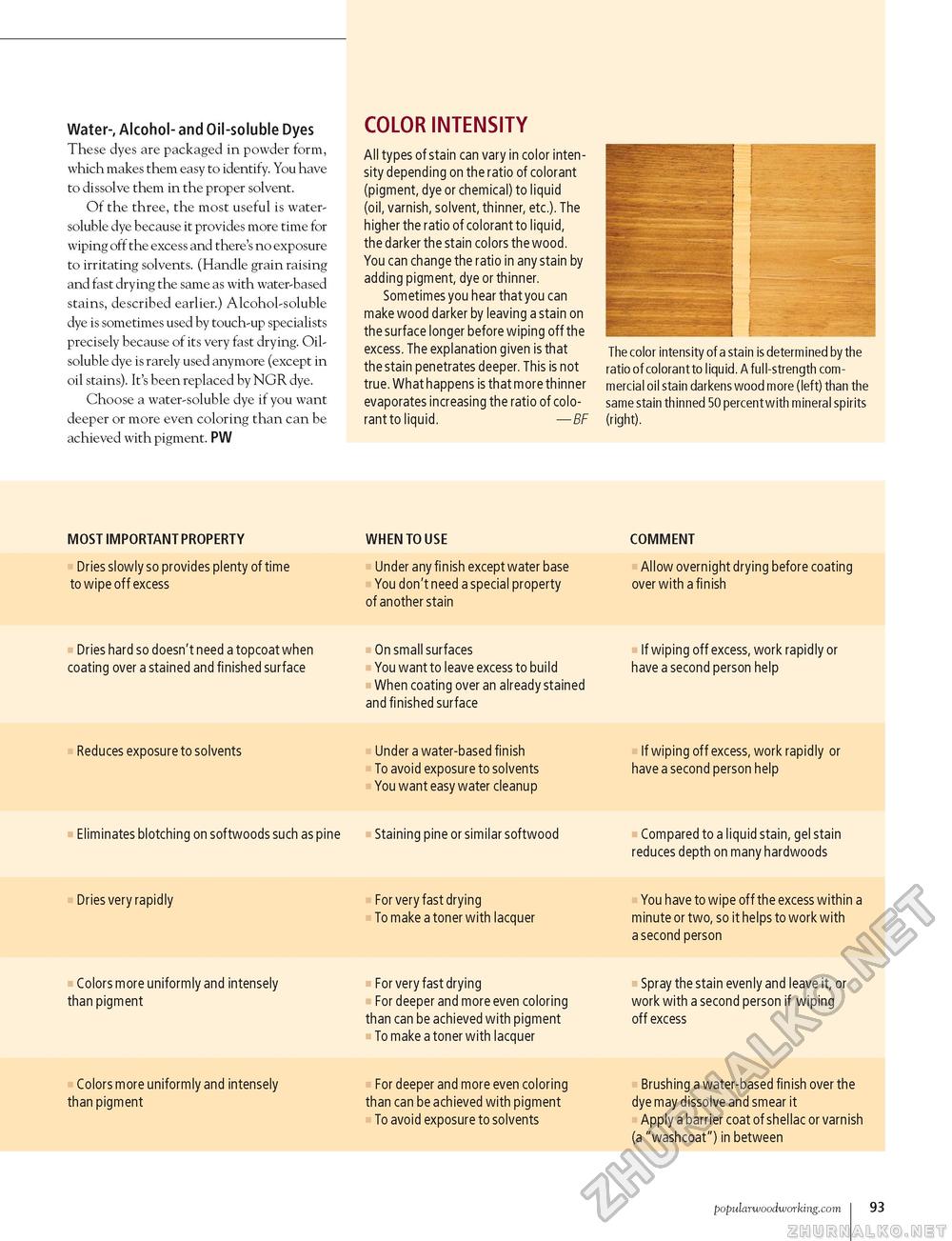Popular Woodworking 2006-06 № 155, страница 95
Water-, Alcohol- and Oil-soluble Dyes These dyes are packaged in powder form, which makes them easy to identify. You have to dissolve them in the proper solvent. Of the three, the most useful is water-soluble dye because it provides more time for wiping off the excess and there's no exposure to irritating solvents. (Handle grain raising and fast drying the same as with water-based stains, described earlier.) Alcohol-soluble dye is sometimes used by touch-up specialists precisely because of its very fast drying. Oil-soluble dye is rarely used anymore (except in oil stains). It's been replaced by NGR dye. Choose a water-soluble dye if you want deeper or more even coloring than can be achieved with pigment. PW
COLOR INTENSITY All types of stain can vary in color intensity depending on the ratio of colorant (pigment, dye or chemical) to liquid (oil, varnish, solvent, thinner, etc.). The higher the ratio of colorant to liquid, the darker the stain colors the wood. You can change the ratio in any stain by adding pigment, dye or thinner. Sometimes you hear that you can make wood darker by leaving a stain on the surface longer before wiping off the excess. The explanation given is that the stain penetrates deeper. This is not true. What happens is that more thinner evaporates increasing the ratio of colorant to liquid. — BF The color intensity of a stain is determined by the ratio of colorant to l iqu id. A full-strength commercial oil stain darkens wood more (left) than the same stain thinned 50 percent with mineral spirits (right). popularwoodworking.com I 93 |








